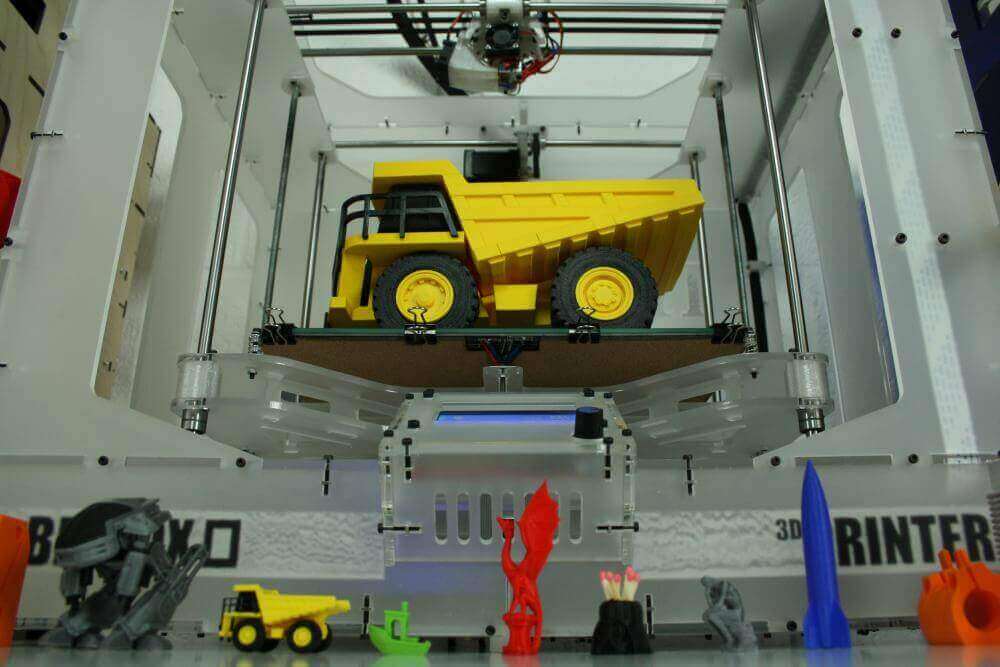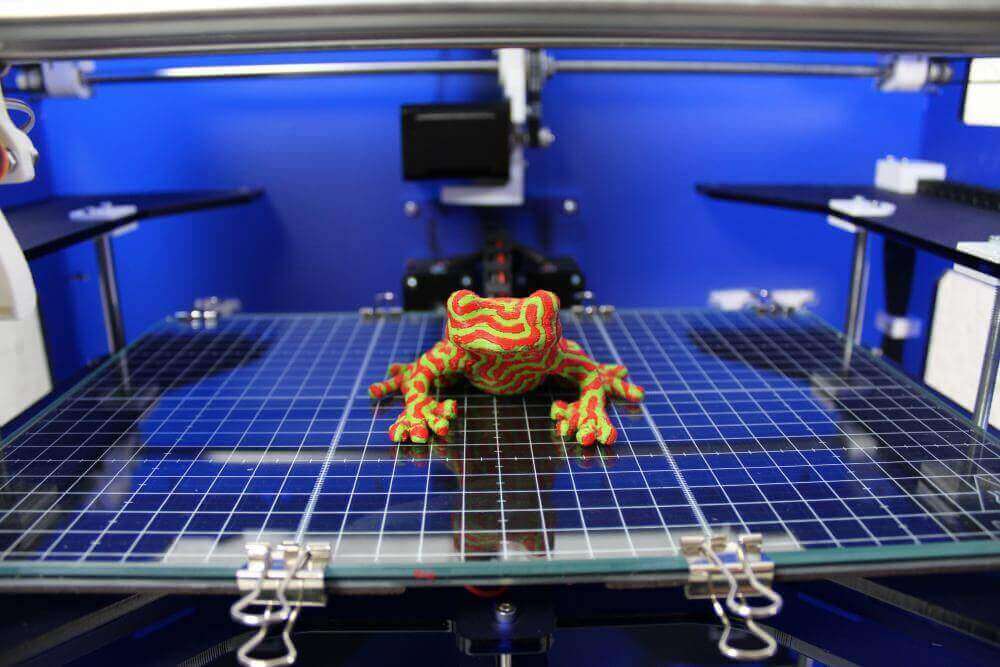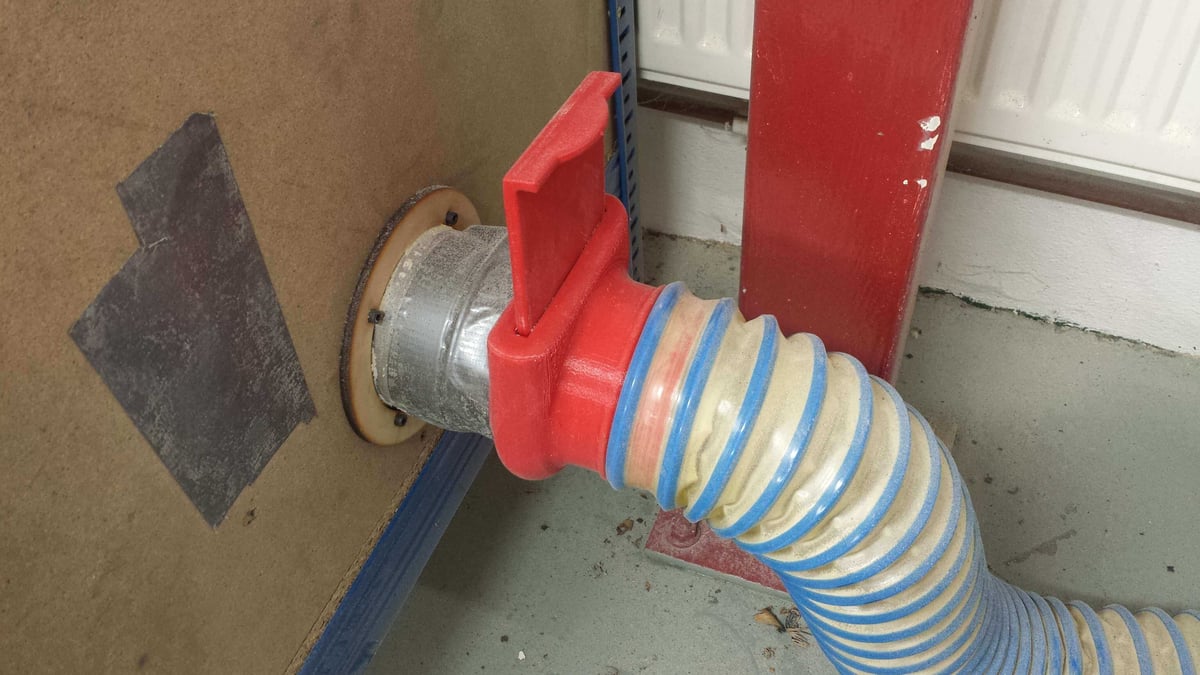The E3D BigBox 3D printer had a deluge of eager backers on Kickstarter. Director of R&D Sanjay Mortimer updates us on their current status.
The promise of a high quality machine with huge build capacity, from a pair of companies with a strong engineering pedigree, was simply too good to resist. The final tally of pledges was a whopping £262,143 pounds.
Sanjay Mortimer, Director of Research & Development at E3D, kindly answered some questions from ALL3DP about the aftermath of the campaign, and the current status of the E3D BigBox as they race to fulfil the first round of pledges in time for Christmas.
Q: The Kickstarter was incredibly successful. What’s your reaction to such a positive response from the 3D printing community?
The level of interest really exceeded our expectations. It was really encouraging to see people getting behind us due to their positive experiences with E3D in the past. I think it was crucial that we were able to back up what we were saying with our existing reputation, as well as being open about how we were achieving certain technical things inside the machine. People on Kickstarter and in the 3D printing community are more cautious and sceptical, with good reason too, but when you’re able to give solid answers to hard technical questions about your design decisions and the capabilities of your machine then it gives people confidence that you’re going to deliver on your promises.
Q: What was the inspiration for the BigBox 3D Printer?
From a conceptual perspective, BigBox comes from people who love 3D printing, and wanted to create a printer for other people who love 3D printing. When you look at surveys of what people in the printing community want, they’re looking for bigger build volumes, multiple extruders, and the ability to hack and modify their machine to suit their needs.
On the machine design side the motion system is based on that used in laser cutters, which have to cover huge areas with great precision. We also take a lot of inspiration from the Mendel90 machine designed by Chris Palmer (aka NopHead), using a combination of sheet materials for rigid structure, with careful attention paid to the small but important matters like cable routing in motion.
Q: What would you say are the potential use cases for a 3D printer with such a huuuuge build volume?
Q: You had an “experimental” dual extrusion BigBox as one of the backer options. What makes dual extrusion such a risky proposition?
Q: What’s the current status, in terms of BigBox production and fulfilling pledges?
We’re doing pretty well! We’ve got pretty much everything on order, with firm delivery dates. A great deal of the stuff has already arrived. We’ve got lots of the finer details really ironed out, little things like packaging. Some things have been a bit of a pain, like all the little screws, and getting custom wires made up for specific connections. We’re totally happy with the design and bill of materials, so procurement of all the parts has been surprisingly plain sailing.
Q: Have you encountered any delays or setbacks that you hadn’t anticipated?
The second laser cutter arrived weeks later than the company said it would. This is a bit of a pain, as laser cutting is the most time consuming aspect of the project by a significant margin. To remedy this we’ve employed a laser cutting technician to ensure the machines run constantly, with production moved to 7 days a week instead of the planned 5 days a week. This should mean we complete cutting on time, but it leaves us less margin than we would have liked.
The print farm is a little behind schedule in being fully built and production operational. Mainly due to us wanting the print-farm machines to be exactly the same in design as the printers we send to users. This means we’ve had to wait for a few unanticipated parts, mainly higher resolution motors to come in before the print-farm can be completed. This one isn’t too concerning to us however, as the actual print time isn’t a schedule bottleneck and we’re pretty experienced in printing parts in a production environment.
Q: This is a collaboration between two different companies, LittleBox and E3D. Can you tell us a bit more about the respective teams and their experience?
At E3D we obviously do Hotends, extrusion systems and the like. We’re pretty well respected in this area and I think we have a fairly solid reputation as a market leader in this space. However beyond our more public hotend business we actually do a great deal of consulting for big 3D printer companies, testing of leading machines and materials for manufacturers, and many other extrusion-based printing related things on the side. We consider ourselves a research and development engineering company first and foremost and having a deep theoretical understanding of how extrusion-based printing works is what we pride ourselves on the most. We’ve built an awesome team around us and have gained a lot of experience in procurement, customer service, and logistics in the process of growing E3D from our bedrooms to our current market position.
Greg Holloway single-handedly launched the very successful MicroSlice desktop laser cutter on Kickstarter. He’s the brains behind the motion system of BigBox which borrows heavily from his laser cutter design experience. Greg is also experienced with running a Kickstarter, providing support for whole machines and can generally turn his mind to most aspects of a 3D printer. He’s a real Raspberry-pi enthusiast which has been very useful for our OctoPrint integration, and he’s very experienced in designing for manufacture with a laser cutter and laser cutting in a production environment.
Q: Vis a vis the feedback from RichRap, and his public critiques of the BigBox; Are you comfortable with such an unusual process?
Q: Any plans to extend the range in future? Perhaps a SmallBox, or a BiggerBox?
I don’t think we’re going to go down the route of having lots of derivative versions of the same machine at different sizes. We’ve already got the low-cost Lite version which is a PLA oriented machine without a heated bed and a lower temperature hotend. I think that the next move won’t be SmallBox or BiggerBox, but rather something more like “BetterBox”. We’ll probably stick to the same machine build size but make improvements in frame construction, and look at how we can make dual extrusion truly perfect.
Q: And this collaboration between LittleBox and E3D, is this going to be a permanent arrangement?
BigBox 3D Limited is a whole new company, partially owned by E3D, partially owned by Greg. We’re all now existing in the same building working together on a daily basis. BigBox is a separate company to E3D and LittleBox, but it’s working well and I don’t see any reason to change. So yes, a permanent arrangement!
Q: Finally, what’s the most useful thing you’ve ever 3D printed?
My current favourite has to be these huge printed air-ducting couplers that we’re using for the extraction systems on the laser cutters that are cutting BigBox frames as I type this. The’re some of the largest practical prints we’ve done and would be totally impossible to print if it wasn’t for the huge available build space that we have on BigBox. Each of these is printed in a single print on BigBox and really show off the power of having that extra build surface.
License: The text of "E3D BigBox Q&A with Sanjay Mortimer, Director of R&D" by All3DP is licensed under a Creative Commons Attribution 4.0 International License.




